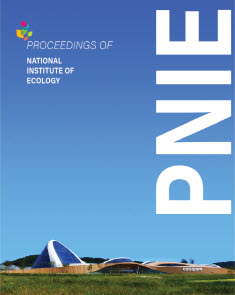 ISSN : 2765-2203
ISSN : 2765-2203
Proposal of Analysis Method for Biota Survey Data Using Co-occurrence Frequency
Jeong-Boon Lee (Ecoinformatics & Control Institute)

Sung Je Lee (National Institute of Ecology)
Jong-Hyun Kang (National Institute of Ecology)
Abstract
The purpose of this study is to propose a new method of analysis focusing on interconnections between species rather than traditional biodiversity analysis, which represents ecosystems in terms of species and individual counts such as species diversity and species richness. This new approach aims to enhance our understanding of ecosystem networks. Utilizing data from the 4th National Natural Environment Survey (2014-2018), the following eight taxonomic groups were targeted for our study: herbaceous plants, woody plants, butterflies, Passeriformes birds, mammals, reptiles & amphibians, freshwater fishes, and benthonic macroinvertebrates. A co-occurrence frequency analysis was conducted using nationwide data collected over five years. As a result, in all eight taxonomic groups, the degree value represented by a linear regression trend line showed a slope of 0.8 and the weighted degree value showed an exponential nonlinear curve trend line with a coefficient of determination (R²) exceeding 0.95. The average value of the clustering coefficient was also around 0.8, reminiscent of well-known social phenomena. Creating a combination set from the species list grouped by temporal information such as survey date and spatial information such as coordinates or grids is an easy approach to discern species distributed regionally and locally. Particularly, grouping by species or taxonomic groups to produce data such as co-occurrence frequency between survey points could allow us to discover spatial similarities based on species present. This analysis could overcome limitations of species data. Since there are no restrictions on time or space, data collected over a short period in a small area and long-term national-scale data can be analyzed through appropriate grouping. The co-occurrence frequency analysis enables us to measure how many species are associated with a single species and the frequency of associations among each species, which will greatly help us understand ecosystems that seem too complex to comprehend. Such connectivity data and graphs generated by the co-occurrence frequency analysis of species are expected to provide a wealth of information and insights not only to researchers, but also to those who observe, manage, and live within ecosystems.
- keywords
- Fauna, Field survey, Flora, Network analysis, Network graph, Species combination
- Submission Date
- 2024-05-07
- Revised Date
- 2024-06-13
- Accepted Date
- 2024-06-17
- Downloaded
- Viewed
- 0KCI Citations
- 0WOS Citations

